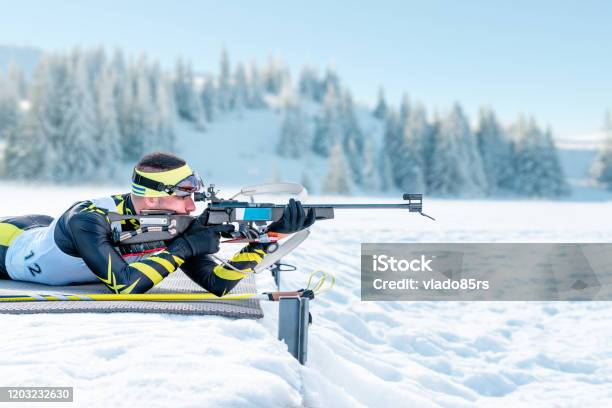Unraveling the Intricacies of Biathlon: A Fusion of Endurance and Precision
Pushing through the biting cold, heart pounding with exertion, skis slicing through the snow - then silence. Suddenly, it's just you, your rifle, and the target. This is the thrilling dichotomy of biathlon, a winter sport that combines the physical challenge of cross-country skiing with the mental test of rifle shooting.

A Historical Overview: From Survival to Sport
Biathlon, as a sport, is relatively modern. However, the skills it demands trace back to hunting techniques used by civilizations in Scandinavia as early as 2000 BC. These early communities relied on a combination of skiing and shooting for survival in harsh winters. Fast forward to the 18th century, where the Norwegian military began arranging competitions that involved skiing and shooting. It wasn’t until 1960 that the biathlon was included in the Winter Olympics, and it has since evolved into a highly technical sport marked by endurance, precision, and strategy.
The Athletic Demand: Balancing Stamina and Precision
The biathlon is a unique sport that demands two very different skill sets. The cross-country skiing component requires high aerobic fitness and muscular endurance. Athletes must push themselves to the limit, navigating challenging terrains at high speed. Following a strenuous ski lap, they must then calm their mind and body to execute accurate shots. This transition from high-intensity activity to a state of focus and precision is a core challenge of the sport.
Training Tactics: Merging Disciplines into One
Biathlon training involves a unique blend of endurance workouts, strength training, shooting drills, and mental exercises. During the off-season, athletes often engage in roller skiing, running, and cycling to maintain their aerobic fitness. Strength training focuses on both the upper body and lower body to support the demanding skiing component. Meanwhile, shooting drills help to hone accuracy and consistency. Mental training is equally crucial, equipping athletes with techniques to control their heart rate and focus under pressure.
Today’s Trends: Advancements and Innovations
Modern biathlon is characterized by advancements in equipment, training methodologies, and competition strategies. From lightweight, aerodynamic skis to precision rifles, technological innovations have significantly impacted the sport. Additionally, the use of data analytics in training has grown, aiding in areas like performance monitoring and injury prevention. As for competition strategies, athletes are continually refining their approach to balance speed, shooting accuracy, and energy conservation.
The Future of Biathlon: An Evolving Dynamics
While biathlon has a rich history and established traditions, it remains a dynamic sport that continues to evolve. There is ongoing debate about potential changes to competition formats to make the sport more spectator-friendly. Additionally, the increasing emphasis on training science and technology promises to shape the future of biathlon, enhancing both athlete performance and spectator experience. As the sport continues to evolve, it will remain a fascinating fusion of endurance and precision, continuing to captivate athletes and audiences alike.
Biathlon encapsulates the beauty of sport - the harmony of physical prowess and mental acuity, the blend of traditional skills and modern innovation, and the interplay of individual effort and team strategy. As we delve deeper into its intricacies, we gain not just an understanding of the sport itself, but also a greater appreciation of the human capacity for resilience, precision, and adaptability.




